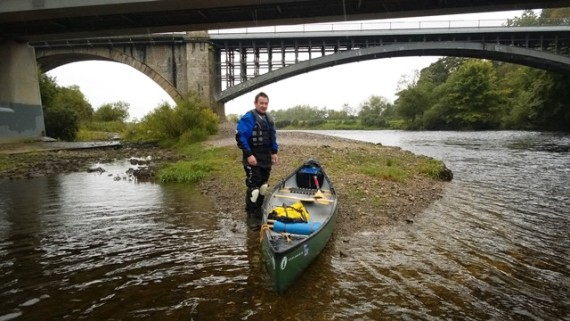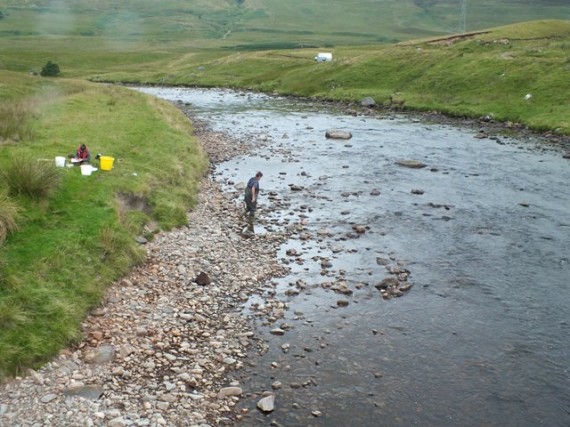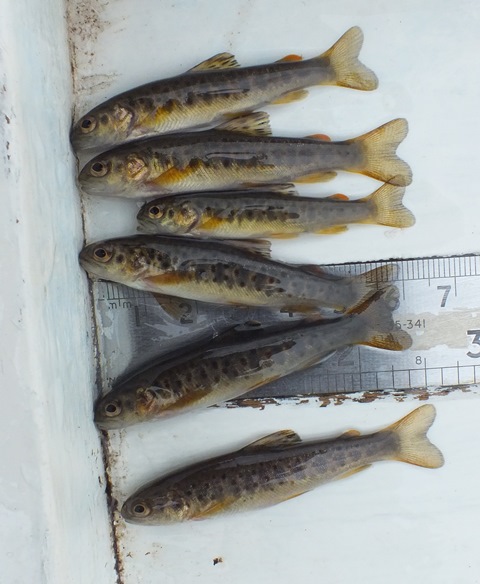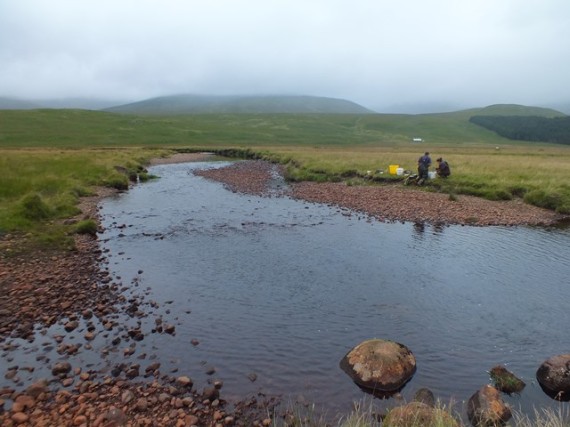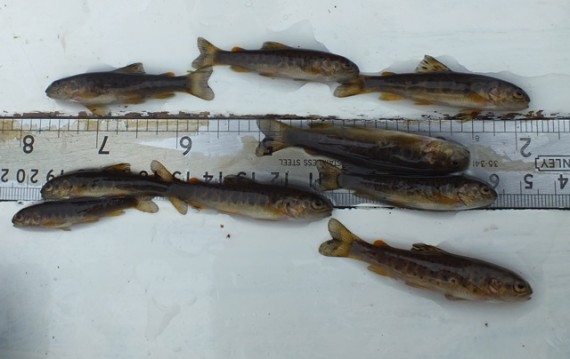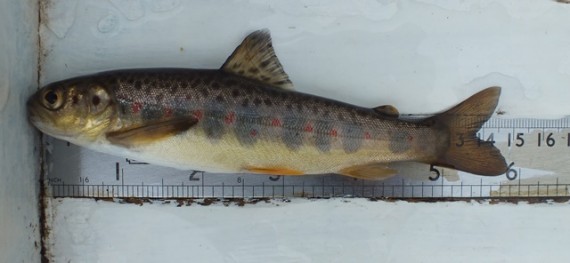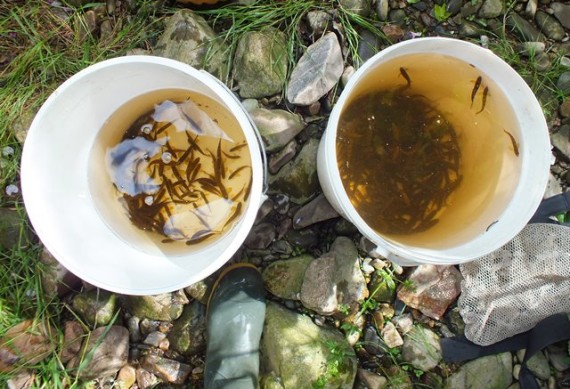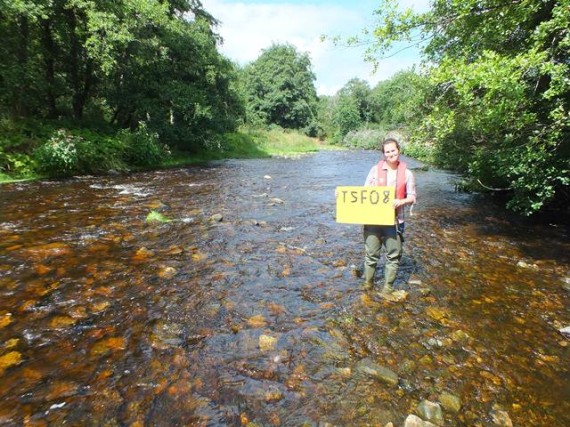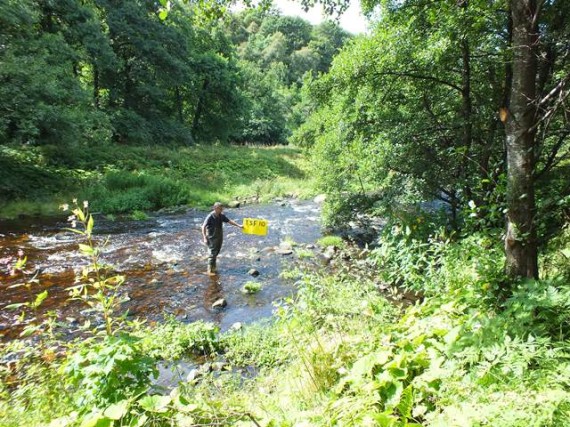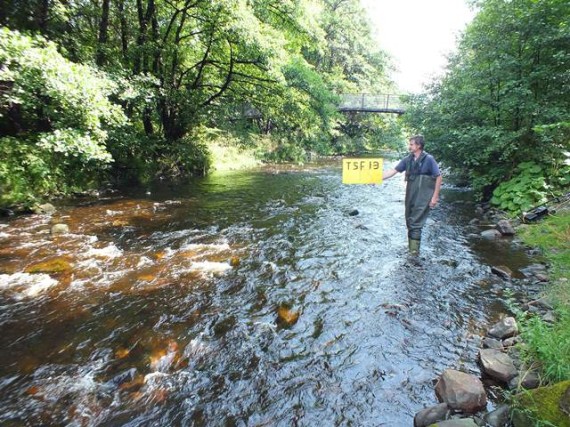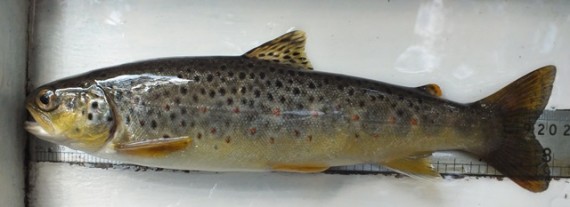Following the hatchery visit this morning Steve and myself proceeded uphill to complete redd counts in two sections of the Livet. By the time we got there the rain had started but then a dreich, snowy late November day is to be expected for redd counting. Despite the overhead conditions everything else was okay for the task at hand although the river was starting to rise and colour at the end.
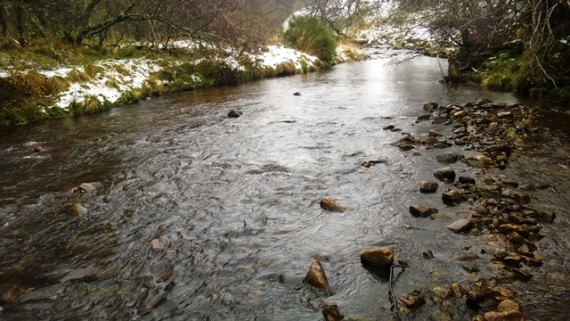
Redd counting is an excellent way to see the river and its character. This photo shows the typical excellent mixed juvenile and spawning habitat found in the upper middle Livet. In the shot there were about six redds, four in the light coloured patch top left and two in a channel just off to the right.
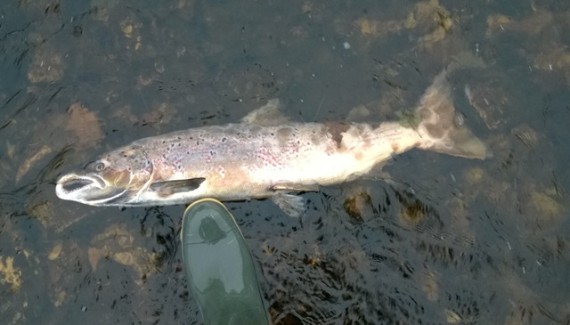
One of many dead cock salmon seen, this particular one would have been a double figure fish in his prime.
We counted two sections today, although they were contiguous. The lower section count was 82 salmon and 47 trout redds, a satisfactory count in a stretch 2.1km long. When I say satisfactory I mean that the egg deposition would be in excess of the hypothetical conservation limit target (7/m2) although that figure may be subject to change during the development of what may become actual conservation limits.
One difficulty with redd counting in a river like the Livet is differentiating between salmon and sea trout redds as both are present in numbers and there is considerable overlap in fish size. Normally features such as size, profile, position in channel, substrate and freshness of the redd provide an indication of species but we saw one or two pairs of spawning salmon today cutting little redds that looked like those we assumed to be trout! Redd counting in a mixed area like this is not easy. Some areas which had been used by sea trout in late October now featured freshly cut gravel indicating some utilisation of the same spawning locations by both species.
The lower section ended at the confluence with the Cromie Water, a productive Livet tributary. We back-tracked a little and found that the lower Crombie was full of redds, mostly old along with some of more recent vintage.
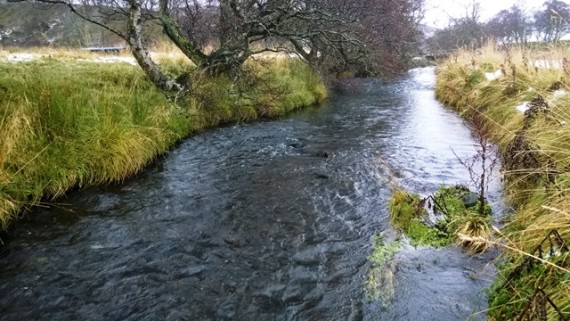
The lower Crombie Water is quite different in character to the Livet, more stable looking with marginal weeds. The substrate was darker but, in this section, absolutely ideal for spawning. To summarise our understanding the Crombie is a great sea trout burn with a few salmon and in its upper reaches supports a prolific juvenile trout population almost to the exclusion of its larger (usually) brethren.
The upper Livet stretch redd count amounted to 69 salmon and 65 trout. Another good total with some live salmon seen and many dead cocks. The only previous redd counts available from those stretches date from 1993/4 when the counts were of similar magnitude to those recorded today.
The rain today, and snow melt, will rule out redd counting in the upper catchment for a day or two but we hope to be out in a lower tributary tomorrow - assistance always welcome!
The post Livet redd counts appeared first on Spey Fishery Board.
Spey Fishery Board

